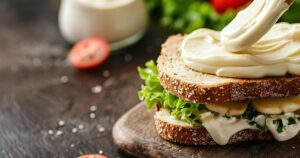
Suggested video 12 recipe ideas to prepare in September!
Video 1 of 3
It is essential to note that the jam will continue to thicken as it cools, so it is best not to overcook it. If you cook it too long, you risk getting a jam that is too thick or even caramelizing it, which could alter the flavor.
Each fruit reacts differently to cooking, so it’s important to adapt based on the variety you’re using. The recipes give a time guide but it is often necessary to adapt it according to the maturity or nature of the fruits. Fruits high in pectin, like apples, gel more quickly, while juicier fruits, like strawberries, may need a little more time.
To solve this cooking mystery, here is the foolproof tip: the cold plate test. You only need a small ceramic plate that you have previously put in the freezer for about 15 minutes. When you think your jam is ready, pour a small spoonful onto the cold plate, then let it sit for 30 seconds to a minute. The moment of truth has arrived! Run your finger through the jam on the plate. If it wrinkles and forms a slightly wrinkled skin, that’s a sign that your jam is ready. The texture should be thick and not spread immediately.
Now that you’ve discovered the cold plate test trick, you can say goodbye to jams that are too liquid or too thick. By mastering this simple technique, you will be able to create perfect homemade jams, ready to be enjoyed on a slice of fresh bread or as an accompaniment to fine cheese.
Source:https://www.750g.com/confiture-maison-connaissez-vous-l-astuce-pour-savoir-quand-elle-est-prete-a34854.htm


